
The geography of Alabama describes a state in the Southeastern United States in North America. It extends from high mountains to low valleys and sandy beaches. Alabama is 30th in size and borders four U.S. states: Mississippi, Tennessee, Georgia, and Florida. It also borders the Gulf of Mexico.
Fletcher v. Peck, 10 U.S. 87 (1810), was a landmark United States Supreme Court decision in which the Supreme Court first ruled a state law unconstitutional. The decision created a growing precedent for the sanctity of legal contracts and hinted that Native Americans did not hold complete title to their own lands.

Pinckney's Treaty, also known as the Treaty of San Lorenzo or the Treaty of Madrid, was signed on October 27, 1795, by the United States and Spain.
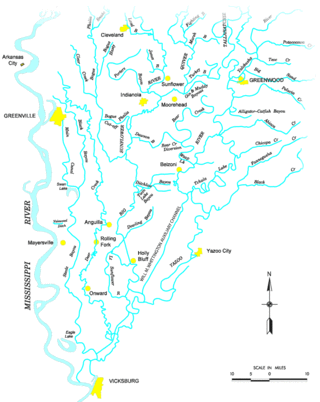
The Yazoo River is a river in the U.S. states of Louisiana and Mississippi. It is considered by some to mark the southern boundary of what is called the Mississippi Delta, a broad floodplain that was cultivated for cotton plantations before the American Civil War. It has continued to be devoted to large-scale agriculture.
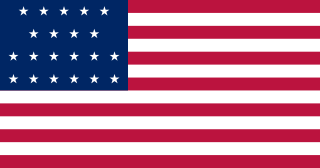
The Territory of Alabama was an organized incorporated territory of the United States. The Alabama Territory was carved from the Mississippi Territory on August 15, 1817 and lasted until December 14, 1819, when it was admitted to the Union as the twenty-second state.

The Territory of Mississippi was an organized incorporated territory of the United States that was created under an organic act signed into law by President John Adams on April 7, 1798, and was dissolved on December 10, 1817, when the western half of the territory was admitted to the Union as the State of Mississippi. The eastern half was redesignated as the Alabama Territory until it was admitted to the Union as the State of Alabama on December 14, 1819. The Chattahoochee River played a significant role in the definition of the territory's borders. The population rose in the early 1800s from settlement, with cotton being an important cash crop.

The territory of the United States and its overseas possessions has evolved over time, from the colonial era to the present day. It includes formally organized territories, proposed and failed states, unrecognized breakaway states, international and interstate purchases, cessions, and land grants, and historical military departments and administrative districts. The last section lists informal regions from American vernacular geography known by popular nicknames and linked by geographical, cultural, or economic similarities, some of which are still in use today.

The Yazoo land scandal, Yazoo fraud, Yazoo land fraud, or Yazoo land controversy was a massive real-estate fraud perpetrated, in the mid-1790s, by Georgia governor George Mathews and the Georgia General Assembly. Georgia politicians sold large tracts of territory in the Yazoo lands, in what are now portions of the present-day states of Alabama and Mississippi, to political insiders at very low prices in 1794. Although the law enabling the sales was overturned by reformers the following year, its ability to do so was challenged in the courts, eventually reaching the US Supreme Court. In the landmark decision in Fletcher v. Peck (1810), the Court ruled that the contracts were binding and the state could not retroactively invalidate the earlier land sales. It was one of the first times the Supreme Court had overturned a state law, and it justified many claims for those lands. Some of the land sold by the state in 1794 had been shortly thereafter resold to innocent third parties, greatly complicating the litigation. In 1802, because of the ongoing controversy, Georgia ceded all of its claims to lands west of its modern border to the U.S. government. In exchange the government paid cash and assumed the legal liabilities. Claims involving the land purchases were not fully resolved until legislation was passed in 1814 establishing a claims-resolution fund.
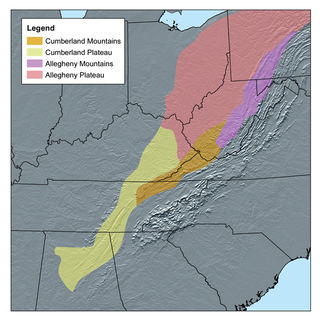
The Cumberland Plateau is the southern part of the Appalachian Plateau in the Appalachian Mountains of the United States. It includes much of eastern Kentucky and Tennessee, and portions of northern Alabama and northwest Georgia. The terms "Allegheny Plateau" and the "Cumberland Plateau" both refer to the dissected plateau lands lying west of the main Appalachian Mountains. The terms stem from historical usage rather than geological difference, so there is no strict dividing line between the two. Two major rivers share the names of the plateaus, with the Allegheny River rising in the Allegheny Plateau and the Cumberland River rising in the Cumberland Plateau in Harlan County, Kentucky.
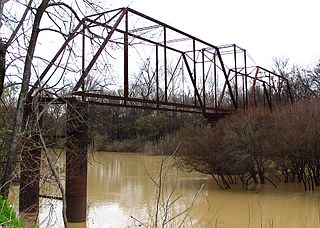
The Sunflower River is one of the main tributaries of the Yazoo River in the U.S. state of Mississippi. It is navigable by barge for 50 miles. It rises in DeSoto County, Mississippi near the Tennessee border and flows south for 100 miles to the Yazoo River, a major tributary of the Mississippi River. At Clarksdale, the county seat of Coahoma County, the annual Sunflower River Blues & Gospel Festival is held.
The "Old Southwest" is an informal name for the southwestern frontier territories of the United States from the American Revolutionary War c. 1780, through the early 1800s, at which point the US had acquired the Louisiana Territory, pushing the southwestern frontier toward what is today known as the Southwest.
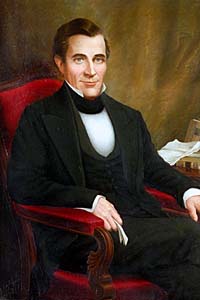
Jared Irwin served twice as elected Governor of Georgia (1796–1798) and (1806–1809). He first was elected to office as a reformer based on public outrage about the Yazoo land scandal. He signed a bill that nullified the Yazoo Act, which had authorized the land sales. Challenges to land claims purchased under the former act led to the United States Supreme Court's hearing the case Fletcher v. Peck (1810). In a landmark decision, the Court upheld the land contracts, and ruled that the state law was unconstitutional in trying to nullify valid contracts.

The Chickasaw Nation is a federally recognized Native American tribe with headquarters in Ada, Oklahoma, in the United States. They are an Indigenous people of the Southeastern Woodlands, originally from northern Mississippi, northwestern Alabama, southwestern Kentucky, and western Tennessee. Today, the Chickasaw Nation is the 13th largest tribe in the United States.
From 1789 to 1796, Georgia governors George Walton, Edward Telfair, and George Mathews, while in office, made gifts of land grants covering more than three times as much land as Georgia then contained. In all they made grants of 29,097,866 acres (117,755 km²) of land in counties that consisted of only 8,717,960 acres (35,280 km²).

The Georgia land lotteries were an early nineteenth century system of land redistribution in Georgia. Under this system, white male citizens could register for a chance to win lots of land that had been taken from the Muscogee and the Cherokee Nation. The lottery system was utilized by the State of Georgia between the years 1805 and 1833 “to strengthen the state and increase the population in order to increase Georgia's power in the House of Representatives.” Although some other states used land lotteries, none were implemented at the scale of the Georgia contests.

The Atlantic Plain is one of eight distinct physiographic divisions of the contiguous United States. Using the USGS physiographic classification system, the Atlantic Plain division comprises two provinces and six sections. The Coastal Plain province is differentiated from the Continental Shelf province simply based on the portion of the land mass above and below sea level.
The Compact of 1802, formally Articles of Agreement and Cession, was a compact between the United States and the state of Georgia entered into on April 24, 1802. In it, the United States paid Georgia 1.25 million U.S. dollars for its central and western lands, and promised that the U.S. government would extinguish American Indian land titles in Georgia. This was the last of the post-colonial land cessions by the original states.
The Trans-Oconee Republic was a short-lived, independent state west of the Oconee River. Established by General Elijah Clarke in May 1794, it was an attempt to head off the new Federal government's ceding of lands claimed by Georgia back to the Creek. In September 1794, state and federal troops forced Clarke and his followers to surrender and leave the settlements. The armed forces destroyed the houses and forts.
State of Alabama v. State of Georgia, 64 U.S. 505 (1860), is a unanimous ruling by the Supreme Court of the United States which held that the true border between the states of Alabama and Georgia was the average water mark on the western bank of the Chattahoochee River. In coming to its conclusion, the Court defined what constituted the bed and bank of a river. The case has had international repercussions as well. The Supreme Court's definition was adopted by courts in the United Kingdom in the case Hindson v. Ashby (1896) 65 LJ Ch. 515, 2 Ch. 27.
Bourbon County, Georgia was a county of the U.S. state of Georgia from 1785 to 1788. The county was created by Georgia in 1785 as part of the Yazoo land scandal out of disputed Yazoo lands in present-day Mississippi and was dissolved in 1788 due to pressure from the federal government.













